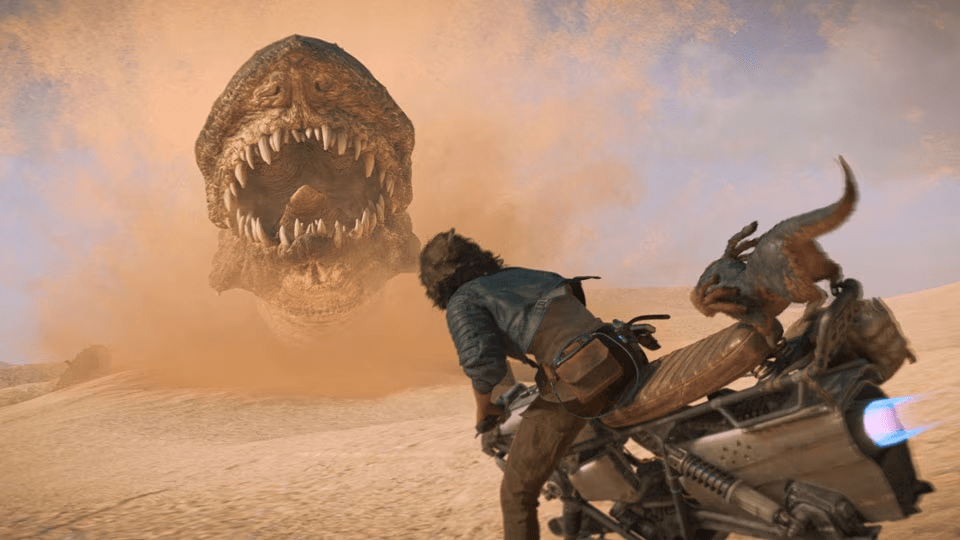
Initial release date: February 20, 2024
Developers: Tozai Games, Irem
Platforms: PlayStation 5, Nintendo Switch, PlayStation 4, Xbox One, Xbox Series X and Series S
Genres: Shooter game, Platform game
Publisher: United Games Entertainment GmbH
Metal Slug, Ghosts ‘n Goblins, and Contra are the three most important run-and-gun games. In this writer’s opinion, series like Assault Suit Leynos and Turrican are both impressive efforts, but they lack the individuality present in Nazca’s, Capcom’s, and Konami’s renowned classics. One tier below those titles is GunForce, which, combined with 1990’s Air Dual, makes up the majority of Irem Collection Volume 2’s anthropology.
Retro compilations appear to be suffering from shrinkflation, whereas anthologies used to include dozens of games. Volume 2, like the selective selection of the first Irem volume, includes regional variants of GunForce’s arcade and SNES versions, as well as two versions of the sequel, Air Duel. While the addition of several territorial types is great, particularly because Japan received more expositional content, you are essentially purchasing only three titles. For die-hard collectors, that might be worthwhile. Metal Slug is gradually taking shape, as several of the Irem crew moved to Nazca in 1994 to develop the beloved series.

Low gravity, high intensity.
Here’s some good news: GunForce remains an excellent entry in the genre. The original game, which emulates the 1991 coin-op that launched the two-game series, still makes you feel like a super-soldier. There are plenty of rapid-fire power-ups, allowing you to shoot ammo in all eight directions. The game’s jump button causes a tragically wobbly leap, but it also allows you to hop onto cars, hang from ropes, and crouch when combined with a downward controller push. Success is mostly dependent on level memorization and the ability to avoid crisscrossing enemy bullet streams.
GunForce’s five stages are cleverly created using a limited sprite pool. However, well-animated explosions and massive aircraft mask the basic backgrounds. However, the big character sprites combined with buoyant jumping make boss bouts frustrating. As expected, the Super Nintendo and Super Famicom versions compromise game speed and graphics fidelity. But what’s amazing is how well the home version adaptations replicate the arcade experience.

A Superior Sequel.
Unquestionably, GunForce II (called Geo Storm) is the genuine gem of this compilation. Irem’s farewell essentially corrects the mistakes of the original GunForce. Not only is your jump less buoyant, but protagonist Max (and optional partner Lei) can now carry two weapons. As expected, dual wielding feels satisfyingly powerful. And, with your ammo dispersed from two distinct directions, taking down opponent barrages feels satisfying. The weapon powerups, which allow you to use lasers and flamethrowers, are also cool. Just make sure you don’t use turn-fire with the latter, as it can reduce your destructive power.
The original game’s robotic design has been replaced with a more organic look. The monstrous machines you’ll face will undoubtedly remind you of Metal Slug, both in shape and color. Here, groups of cheerleaders mimic the raggedy POWs who are still visible due to the obliteration just in front of them. The addition of set-pieces, however, is GunForce II’s most notable upgrade. From mowing down a legion of frenzied bikers to a huge enemy robot capable of conjuring a Ferris wheel-sized ring of projectiles, the game seems like a highlight film.

Tanks, trains, and enemy aircraft
Air Duel, Irem’s 1990 vertically scrolling shoot-em-up, completes the bundle. Before taking off in each of the game’s seven stages, you will be able to choose between a jet and a helicopter. The former features a piercing forward-firing shot, and the latter allows you to angle your slightly weaker projectiles. Both planes are equipped with rolling bombs and may gather floating power-ups. Survival necessitates continual movement, as adversaries are precise and their projectiles are extremely rapid.
Annihilating enemy vehicles straight out of the Metal Slug universe is certainly satisfying, but the difficulty curve becomes excessively steep. The first two stages are manageable for shoot-em-up beginners, but things quickly escalate from there. As a result, Air Duel can be discouraging, and even experienced STG fans may find themselves stuck by the fifth or sixth boss.

Collection? Yes. Commemoration? Not even close.
Irem Collection Volume 2’s emulation is satisfactory, including features such as the option to rewind play, apply multiple shaders, and select from a variety of wallpapers. However, making any kind of change requires holding the start button, which may disrupt play. Furthermore, Volume 2 falls short of its predecessor in terms of game information.
Aside from basic information regarding geographies and hardware platforms, there is no extra context provided. There is no box art, instructions, images, or commentary from any of the original developers. The menus do not even identify when each release will be available. Irem Collection Volume 2 resembles a museum, with solid but sparse shows and no attempt at curating. It’s tough not to wish that Digital Eclipse, the creators of Atari 50: The Anniversary Celebration and Llamasoft: The Jeff Minter Story, were in charge.

Review Overview
Gameplay: 79%
Controls: 82%
Aesthetics: 78%
Content: 80%
Accessibility: 76%
Value: 81%
Overall: 79%
A NOSTALGIC BLAST FROM THE ARCADE PAST!
Summary:
“Irem Collection Volume 2” puts vintage gaming aficionados on a nostalgic journey, with a carefully curated selection of legendary arcade titles that defined a generation. The gameplay is as tough and addicting as ever, with controls that are faithful to the originals while preserving an arcade feel. Though the aesthetics are dated, the collection’s appeal is apparent, reviving the vivid, pixelated brilliance of arcade classics. With a wide range of titles and supplementary features, Irem Collection Volume 2 is an ideal choice for fans of gaming history and retro challenges.
